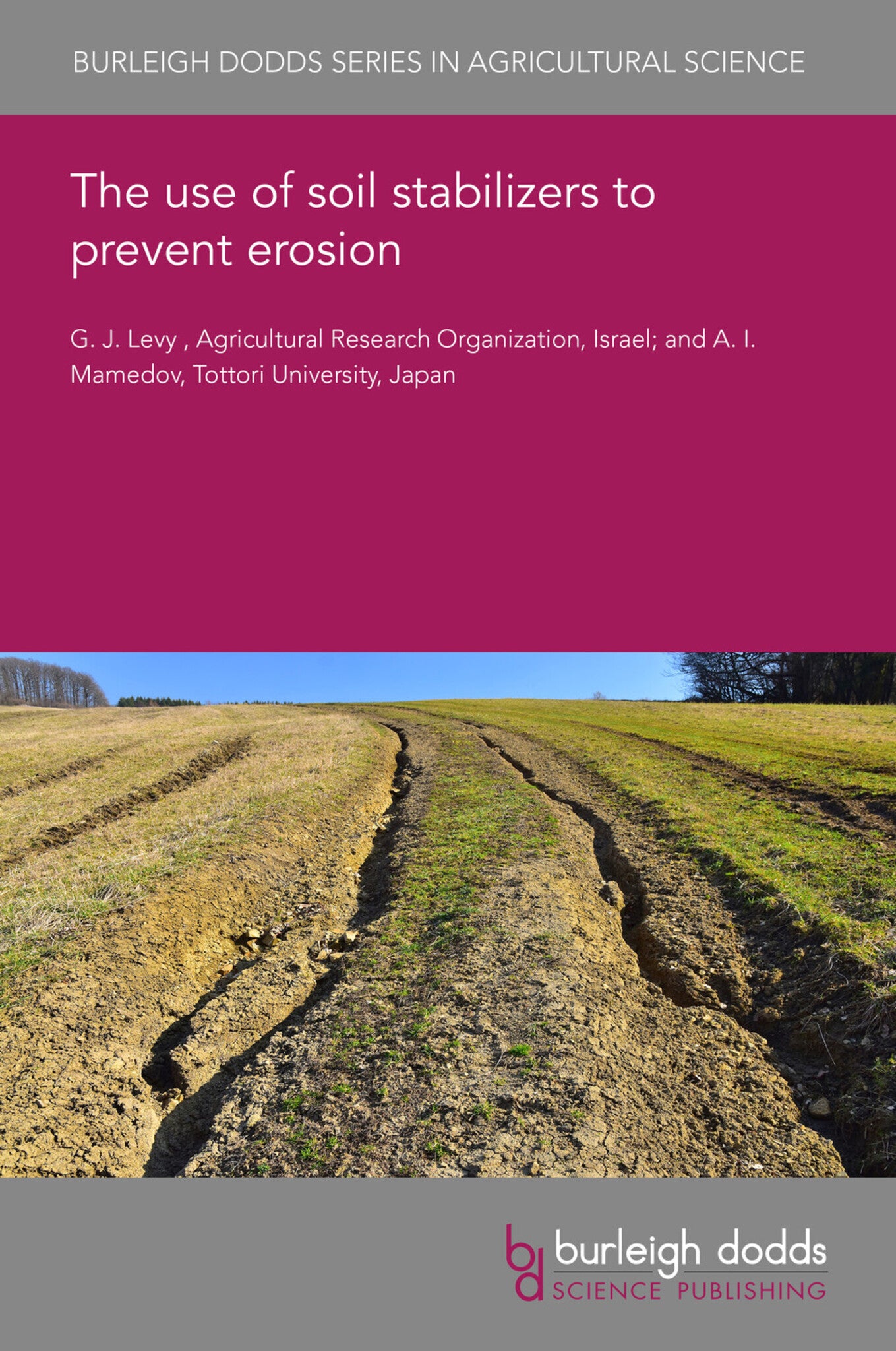We're sorry. An error has occurred
Please cancel or retry.
The use of soil stabilizers to prevent erosion

Some error occured while loading the Quick View. Please close the Quick View and try reloading the page.
Couldn't load pickup availability
- Format:
-
21 August 2024

Soil and water conservation is essential for sustaining agricultural production and for protecting the soil ecosystem. This chapter discusses an alternative approach for soil erosion mitigation, which advocates modification of soil properties that are linked to processes that control degradation of soil structure stability. The chapter reviews the potential of three types of soil stabilizing agents (gypsum and gypsiferous materials, synthetic polymers, and organic waste materials). The focus is the impact these soil stabilizers can have on cultivated soils, many of which are associated with poor structural stability (e.g. soils from semiarid or humid regions), which ultimately leads to limited infiltration and to elevated levels of runoff and soil erosion. Current research suggests that judicious application of such stabilizing agents to the soil can lead to enhanced soil surface structure stability and combating soil erosion.

TECHNOLOGY & ENGINEERING / Agriculture / Agronomy / Soil Science, Soil science and management, SCIENCE / Global Warming & Climate Change, SCIENCE / Environmental Science, TECHNOLOGY & ENGINEERING / Environmental / General, TECHNOLOGY & ENGINEERING / Agriculture / Sustainable Agriculture, TECHNOLOGY & ENGINEERING / Agriculture / Agronomy / Crop Science, Climate change, Sustainable agriculture, Agronomy and crop production, Organic farming

- 1 Introduction
- 2 Gypsum and gypsiferous materials as soil stabilizers
- 3 Polymers as soil stabilizers
- 4 Organic residues as soil stabilizers
- 5 Conclusion
- 6 Where to look for further information
- 7 References



